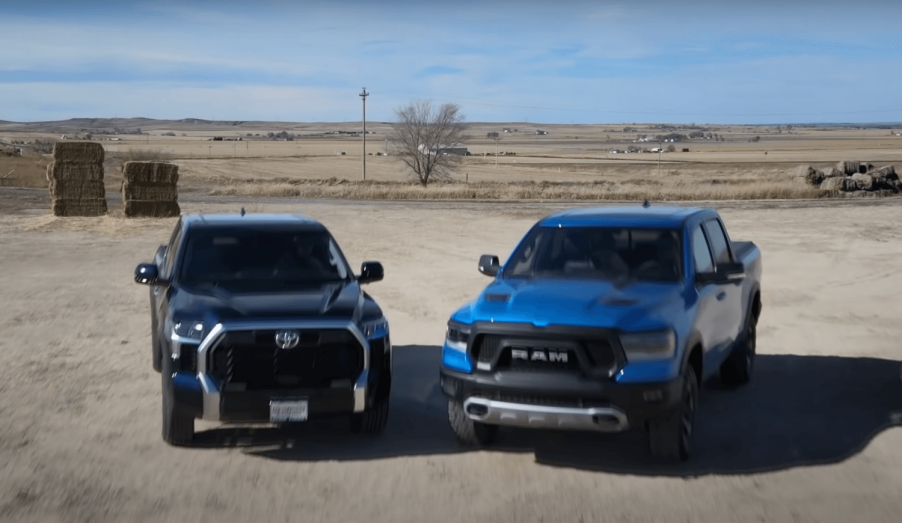
You May Prefer The Ram 1500’s Old Interior to The Toyota Tundra’s New Cab
When Ram redesigned its half-ton 1500 pickup truck for the 2019 model year, it upgraded its interior materials and features. Many reviewers agreed the result was the best interior in the pickup truck segment, and it set a high bar for other trucks. The all-new third generation of the Toyota Tundra debuted for the 2022 model year. While Toyota did its best to upgrade the truck’s interior, not everyone loves the result. Here’s why the Tundra’s interior may not be for everyone.
The Ram’s interior has class-leading storage spaces

You might not think too much about the storage spaces available in your full-size pickup truck cab. But Ram certainly does. Many reviewers agree the Ram 1500 leads its segment in thoughtful storage solutions and well-designed components.
While the Tundra has a regular glovebox, the Ram has a dual-level glovebox with two separate storage compartments. The Ram also has two separate compartments in its huge center console, one inside and one in the lid. The Tundra has a large center console, but reviewers (including the Meyn Motor Group on YouTube) found it flimsy in comparison.
The Ram has best-in-class rear legroom
Neither the current Ram 1500 nor Toyota Tundra comes as a two-door “regular” cab. The Tundra’s smaller four-door “double cab” trails the segment with 33.3 inches of backseat legroom. The Ram’s smaller “quad cab” leads the segment with 35.6 inches of backseat legroom. The Toyota Tundra’s larger crew cab has 41.6 inches of backseat legroom (ahead of just the Titan), while Ram’s crew cab leads its segment with 45.2 inches of backseat legroom.
In the back seat, the Ram 1500 has a flat floor and a reclining back seat. It has a fold-up back seat with a storage tray beneath. On the driver’s side of the rear, it also has an in-floor storage bin that doubles as a cooler.
The Tundra, on the other hand, has a hump in the rear floor, so the middle passenger has much less legroom. While its crew cab’s rear seat does fold up, it does not have a tray to keep items from tumbling forward.
One major difference is that lower trims of the Ram 1500 are available with a front bench seat or front buckets. Every new Tundra has front bucket seats, so the Tundra is only available with five seat belts.
The Toyota Tundra has better infotainment and sound system upgrades
The Ram certainly doesn’t beat the Tundra in every metric. While the base infotainment screen for both trucks is an 8-inch unit, the Tundra’s upgrade is a 14-inch horizontal screen that is worlds better than the Ram’s available 12-inch vertical unit. Reviewers also like the intuitive Tundra infotainment software and physical HVAC buttons.
Toyota also upgraded the materials it uses in the Tundra’s interior. Reviewers especially like the utilitarian leather/plastic mix called “SofTex” in the mid-trim seats. Though materials are upgraded, Toyota maintained a utilitarian styling in its Tundra interior. The surfaces are blocked off, even chunky. Some drivers love the look, while others prefer the sleeker Ram.
Next, find out the surprising similarities between the mpg of the Tundra’s V6 and Ram’s Hemi V8, or watch the two trucks’ interiors compared in the video below:






